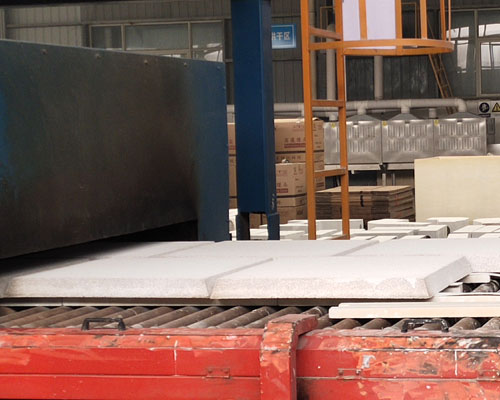Kyanite powder is used in the manufacture of ceramic foam filters, but any aluminosilicate, amorphous silica, magnesium aluminum silicate, or lithium aluminum silicate powder can be used equally effectively.
It is believed that the kyanite material produces a stable grain structure, giving the finished product low thermal expansion characteristics. In addition, the raw material is cost-effective in terms of high-volume and long-term stable supply.
The aqueous slurry additionally uses boron-containing raw materials, which provide a glass phase former for the final product during the firing process. Exemplary raw materials include boric acid, boron oxide, colemanite, calcium borate, or boron-containing glass. The most preferred is boric acid. The boron-containing material used in the aqueous slurry at a concentration of 2-25% by weight provides a glass-forming system with other slurry components during the firing process. This glass contains shell material, which in turn protects the aluminosilicate particles from the molten aluminum alloy in use.
The aqueous slurry preferably contains auxiliary agents for controlling various properties. Particularly preferred additives include surfactants, rheology modifiers, defoamers, sintering aids, solvents, dispersants and the like. A slurry can be defined as having a solid phase and a carrier phase, where the solid phase includes the ceramic precursor, and the carrier phase includes a solvent and an auxiliary agent. Water is the preferred solvent or carrier.

After impregnating the precursor foam with the aqueous ceramic slurry, the drying of the ceramic material is usually carried out in a convection dryer at a temperature between 100°F and 600°F for a duration of between 15 minutes and 6 hours. A shorter duration is desirable for the process economy and high manufacturing rate.
The firing manufacture of ceramic foam filters usually occurs above the temperature at which the glass phase of the material can be formed and combined, resulting in the required strength and corrosion resistance characteristics in the final product. Firing is usually carried out in a continuous furnace at a temperature higher than 1100°C for a duration of 1-3 hours, and the peak temperature is maintained for 15 minutes to 1 hour. Lower temperature and shorter duration improve the manufacturing economy. However, sufficient time and temperature must be provided to achieve the required strength and corrosion resistance of the material.
The pore size of the filter is mainly determined by the initial pore size of the polymer foam used in the process. For effective aluminum alloy filtration, the typical primary pore size is between 10 and 70 pores per linear inch. However, each application requires a unique pore size, which depends on the required filtration efficiency and the required filtration permeability of the foundry shop. The pore size is often referred to as the number of holes in a linear dimension, such as the number of holes per inch. The higher the PPI value, the smaller the cell diameter.

